While playing cards first migrated from Egypt and the Far East to Europe in the late 1300s, decks which may have been used specifically for divination — or fortune telling — appeared in various parts of Italy nearly 50 years later. These Tarot decks, from the Italian “tarocchi,” started with the four traditional suits, but added a new twist — a series of cards with religious images. The new cards, called “carte da trionfi” or “triumph cards” (and even later “trump cards”), depicted allegorical scenes such as death, love, the world and the sun.
Over the next 100 years, different decks were hand crafted around Europe, each featuring a unique assortment of cards. A deck from 1418, commissioned by Duke Filippo Maria Visconti, included 60 cards with several featuring different Greek gods and species of birds. A later deck from the Florence, Italy, region comprised 97 cards, adding astrological symbols and alchemic elements to traditional tarot motifs.
In the first half of the 20th century, Tarot surged in popularity as a divination tool. The Rider-Waite and Thoth decks, two of the most popular modern decks, originate from this era.
Originally published in 1910, the Rider-Waite Tarot deck features cards illustrated by Pamela Colman Smith under the direction of A. E. Waite. When many people today think of the Tarot, they are likely thinking of this widely popular deck. In addition to rolling back many of the overt Christian images found in earlier interpretations, the Rider-Waite stood out as the minor arcana — or suit — cards were as lavishly illustrated as the trump cards.
Commissioned by the legendary occultist and mystic Aleister Crowley, the Thoth Tarot was hand painted by artist and Crowley follower Lady Frieda Harris. Unlike previous decks, Harris’ cards included mystic, as well as scientific, references. Accompanied by the guide The Book of Thoth, this deck changed several trump card titles from its Rider-Waite counterpart. Also, the individual suit cards were each assigned astrological signs and decans based on traditional Greek and Egyptian star lore.
Today, Tarot decks can be found in nearly any artistic style and with one of hundreds of possible themes. Central conceits like steampunk, Lovecraft, fairie, LGBT+, Celtic, New Age, and more can be purchased online or at shops around the world.
For additional reading on the mystic Tarot, visit the Arca Noctis digital library’s Cartomancy section.



